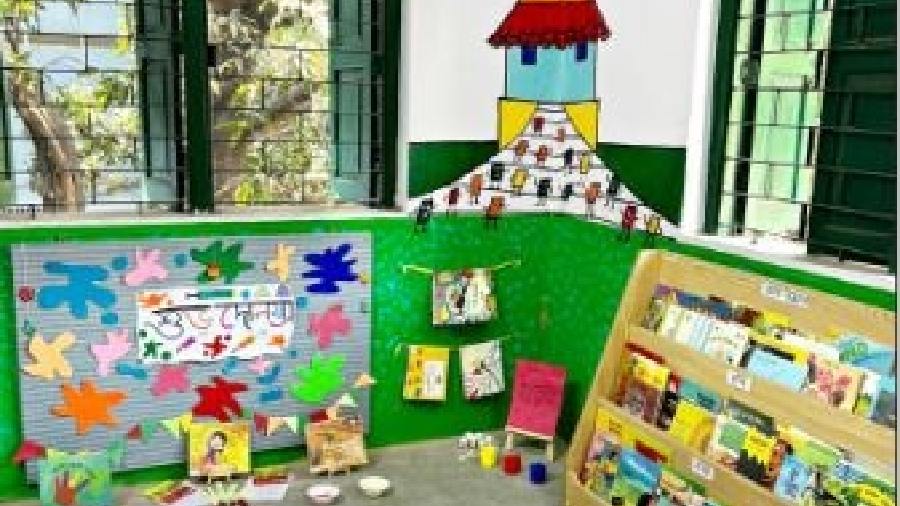Libraries that have come up in five Kolkata Municipal Corporation-run primary schools will give many first generation students access to “contemporary contextual children’s literature” and help develop an interest in books.
The libraries — named Golpo Ghor — have been set up by an NGO that works for children from financially disadvantaged families and were inaugurated on Saturday. They have come up on school premises in the Tiljala and Topsia areas, in two wards of the KMC.
The parents of many of the students at the municipal schools are daily wage earners, but they aspire to get their children educated.
The libraries have been designed as a vibrant space where the child would want to spend time.
“For a start, we are giving the kind of books to children that are not very heavy of reading but are pictorial. That would draw their attention to the book and get them into a reading habit,” said Anupriya Bhattacharya, associate director, Ek Tara, the NGO that has set up the libraries.
“We are connecting the classroom to the library and that would give the students a platform to express themselves and initiate a conversation around books.”
The idea behind setting up these libraries is creation of adequate school infrastructure and facilities and create a quality learning environment for children from disadvantaged families.
“We all grew up with libraries around us, but the new generation has moved away from books and are more engaged with devices,” said Sandipan Saha, mayoral council member in charge of education at the Kolkata Municipal Corporation.
“The best way to inculcate a reading habit is to give them libraries. These are not conventional libraries. They are more colourful and have a vibrant space that would keep the students engaged,” Saha said.
In the digital age, more so after the pandemic, children have access to smart phones and many of them are more keen on surfing the internet in free time than turning the pages of a book.
Even children from a disadvantaged background has access to a phone — if not for the whole day, then at least when the parents are home.
“Disadvantaged communities do not have access to print materials,” Saha said, referring to the crucial role the libraries are going to play.
